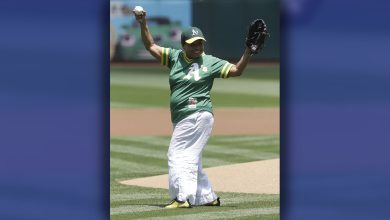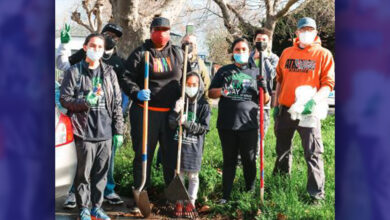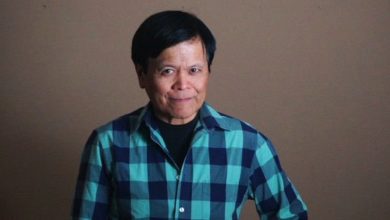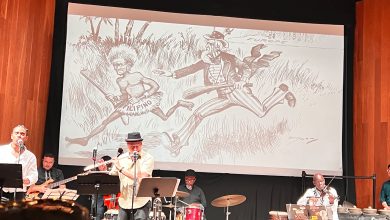Houston Fashion Designer Chasity Sereal Puts Her “Growing Pains” on Display in Wearable Art Experience
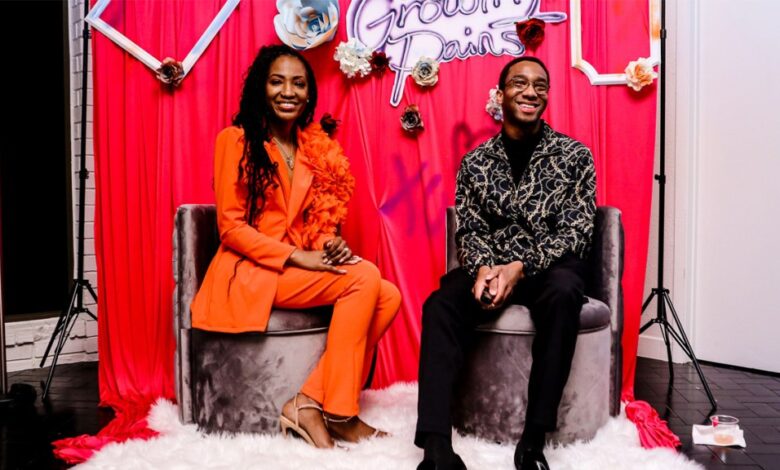

ABOVE: Designer Chasity Sereal and Forward Times Contributing Writer Terrance Turner (Photos by Tye Visuals Photography)
On Saturday, March 4, the Harris County Cultural Arts Council presented “Growing Pains,” a wearable art exhibit by designer Chasity Sereal. The event featured an array of designs by Sereal, a Houston-born fashion designer who specializes in custom bridal wear, evening wear and luxury streetwear. Sereal’s unique designs helped propel her to the final four on season 19 of Bravo’s hit show Project Runway. Her latest collection showcases her personal growth through the use of a flower motif. As she wrote in her artist statement:

Chasity Sereal’s very first design displayed at the “Growing Pains” Wearable Art Experience
“She is a flower. Through resilience and determination, she continues to rise above adversity to show up for her community, her family, and most importantly herself. She has defied all assailants while nourishing her roots; she is impenetrable and uses the thorns of her flower to protect her immaculate beauty […] the world chooses to rain on Black women. We choose to water our gardens, filling up from the roots up to the stem.”
In addition to the exhibit, the event also featured an interview and Q&A with the designer herself. During an “Artist Talk” Sereal answered questions from the host and the audience. She explained the genesis of the exhibit’s title: “I feel like the title developed over probably the past…I would say, six months. Becoming a new wife and just transitioning in a field of, not only in fashion design but in acting, too. And from a Black woman’s standpoint, I feel like growing — it’s not [something] we share with our community or with each other, and you have to tackle it on your own sometimes, through internal battles. So, I think that’s where that title came from.”
She added: “Me going into the role of not only being a mom, being a wife, having all of these hats, I was like: when am I going to be able to take care of myself? Or is that even a thing?” When asked what the next phase of her growth looks like, she replied: “Nurturing myself…and not apologizing for that. Not feeling bad for needing time to myself. Because I’m no good for anyone around me if I don’t water my own garden.”

“Growing Pains” Wearable Art Experience centerpiece
Asked how she sees herself doing that, she answered: “Self care. Taking time to myself. Telling my kids no. Or dropping them off with my sister and my mom,” she laughed. “And not feeling bad for it because, like I said, as women we are nurturers. I want to nurture. I want to be there for everyone. But if I’m not there for myself, I’m no good.”
There’s a strong flower motif throughout the exhibit. Sereal explained why she chose the theme. “I think giving people flowers while they’re here is definitely important,” she said. “I feel like you want people to tell you, or to just give you a good pat on the back. Like we can do it ourselves, but it’s nice to just hear it.”
Inside the exhibit hall, viewers were treated to an array of Sereal’s dazzling designs. Each of Sereal’s creations comes with a caption printed on the wall, explaining the message behind it. The first design she ever worked on is there: a multicolored tutu on a multicolored spray-painted mannequin.
Sereal spoke with the Forward Times about what inspired particular pieces and what message she wants the audience to take away from them.
“What I would want the audience to take away from my first piece…you have to start somewhere, and don’t be afraid to. Because what blossoms through that is something that’s beautiful: a story of determination and passion, no matter what field it’s in. And I hope – I’m going to hold on to that piece, to remind me why I started and why I’m still going.”

Chasity Sereal pictured with her sister, daughters and mother at the “Growing Pains” Wearable Art Experience
Next to that is the centerpiece: a mannequin whose head is replaced by a red and white bouquet. She’s draped in an off-white gown covered in pink roses, with a bouquet at the bottom and a dramatic train, also covered with flowers.
“This piece took a few weeks,” Sereal says. “I was drawn to the fabric. I love 3D, textured laces, and in this period — in any season that I’m in — I always feel like I’m like a flower: growing, blossoming, shedding petals. And I wanted to do something that was very nice and delicate, but also structured, and cause drama — ‘cause she has a train.”
On the other side is the “Pillar of Strength,” wearing a long, purple dress with a matching ruffled coat. The piece stands out, not only for the attention to detail — the plunging neckline and beaded bodice — but also for its message. “As a Black woman…Even if we’re in a place of darkness, we’re still expected to show up, be perfectly constructed, beautiful and strong.”
Sereal explained that the piece was inspired by moments of personal darkness that she had to push past. “That definitely stems from something that I went through and had to figure out how to grow through. Because as a Black woman — no matter what is going on on the inside — because I’m a mother, because I’m a wife, I’m still expected to do my duties and show up. But I have learned to nurture [myself],” she says. “You have to take time to yourself to become the best version. And I feel like that piece is kind of transitioning into small dark elements. But she’s still beautiful, so you don’t know what she’s going through unless you ask her.”

Chasity Sereal design featured in the “Growing Pains” Wearable Art Experience
That theme of darkness transitions into light on the next piece, which is the brightest of the group. An orange mannequin is clad in a two-piece dress with a bright floral theme; the dress evokes springtime with its pastel palette of pink, blue and green. Accompanying that piece is another written message: “It’s okay not to be okay! It’s okay to take a minute to yourself. To LOVE on you.”
Also featured is a glittering black, metallic bodysuit with a long, ruffled coat. The design was featured on Project Runway.
Sereal’s theme was “rebellious reflection: being that black sheep growing up.” She adds: “I wanted to step out and create something that is beautiful when you look within yourself. Every piece and motif is perfectly paired and they mirror each other. So, they’re actually looking at each other’s reflection. But you have to dig deep in that piece, if you walk up on it. The legs perfectly match, and each piece is hand-sewn individually. So, it’s a very therapeutic process for me to create that, to learn to love on myself and understand, like I said, that I am enough. I am good enough.”
She also mentioned this piece during the artist talk: “One of the pieces that a lot of people said was their favorite was the fully beaded bodysuit with the ruffled coat. That piece was very time-consuming and it actually came from one of my — well my latest collection from Project Runway. It was called ‘Rebellious Reflection,’ where it was hard to look myself in the mirror at times. And eventually I had to own who I was and that I was different and every journey is not the same. So there’s pain behind that beauty. But I can mask that very well in my pieces. But it’s also a creative release for me because people react to it.”
The final two pieces are “Pink Petals” and “Projections in Reflections”. The first features what looks like a pink ruffled skirt but is actually pants.

Chasity Sereal’s “Pillar of Strength” piece featured at the “Growing Pains” Wearable Art Experience
Sereal reveals: “Both pieces took time to build. Although it looks simple, they’re beautifully complicated. The pink piece says ‘Pink Petals,’ and women are naturally nurturing, and we’re drawn to this color.” She adds: “Even though we are nurturing, we are strong. But we like to be treated as a delicate flower sometimes. We don’t always want to have to show up as the strong Black woman. We have a heart; we cry just like anybody else.”
The latter design consists of a simple black blouse leading to a huge, dramatic black skirt and elaborate train, featuring yards of black and purple ruffles. Its message: “Never let others project their insecurities onto you.”
Sereal elaborated on the message she wanted to send with the piece: “I have arrived. And I know I’m here to stay, and not letting anyone else project their fears on to me in stopping what I feel like my destiny is.”
The process of making the skirt was intensive. “Each ruffle was hand-created and then sewn onto it. I hand-created each ruffle. So that was over 100 yards of black chiffon. And the purple that’s in the front, I cut it to strips and I ran it through a machine until I was done. The ruffles took about seven days to make,” she says. “But it’s such a therapeutic process to me and such a feeling of gratitude and gratefulness when I see my designs.”
Chasity Sereal took an unconventional road to fashion design. She was inspired by her father Ronald Sereal, a hairstylist who had a talent for sketches.
“He would always have this little notebook at home and would say, ‘This is going to be a big break. I’m going to sell this invention to somebody, and we’re going to make millions,’” she told Houstonia magazine. “Unfortunately, he never lived to see that.” He died of a heart attack when Chasity was just 12.

Harris County Cultural Arts Council Director of Artistic Programming Stacey Allen, Designer Chasity Sereal and Harris County Cultural Arts Council Founder and Executive Director Michelle Bonton
“Chasity was a daddy’s girl, and his death really affected her,” her mother Aretha Sereal told the Houston Chronicle. “She threw herself into sketching.” Chasity told Houstonia that losing her father “just lit a fire in me to go forward and go nonstop for my passion, because I didn’t get to see him follow his.” During the event on Saturday, she told the audience how the loss made her realize that life is too short to not follow your dreams.
Inspired by her father’s sketches, Chasity started sketching designs of her own. Her first foray into fashion designing involved church socks, which she cut and turned into outfits for her Barbie dolls. “Okay. So y’all remember those church socks with the ruffles? I used to cut them up, and Aretha was very upset about that.”
“Yeah, they were expensive,” her mother commented from the audience.
But Chasity explained that she was working with what she had: “My dolls did not — Barbies did not have the fashion options that they have now. So I had to improvise. And I tried to hide it, but when it was time to go to church and I didn’t have those socks…Then I just started using ribbons, glue. Any little trinkets I could do,” she said. “Barbie definitely was my first model.” Eventually, her mother bought her a sewing machine and a mannequin from JoAnn’s Fabrics. Chasity began stitching together ensembles. In high school, she sketched ideas for her classmates’ prom dresses.

“Growing Pains” Wearable Art Experience attendees
But after high school graduation, Chasity experienced the first of several obstacles on her career path. She became pregnant at 19 after graduating from Humble High School.
“I became a mom at the age of 20, and I really wanted to pursue fashion, and I had a lot of doubt from outside people because I was a mother. I didn’t have anybody in my family who knew how to sew. So when it comes to where I learned the trade from, I went to YouTube University,” she said. From YouTube videos online, she learned how to sew and drape fabric, learning to create the unique styles she uses today.
Unable to afford the expensive training at the Art Institute of Houston and unaware of the more affordable courses at HCC, Sereal opted to chart her own path, becoming self-taught. But the fashion world wasn’t always receptive to that.
“Being totally transparent, my experience getting into fashion design, especially in Houston, was not kind. I was not well-received; because I was self-taught, I wasn’t taken seriously,” she said on Saturday. “So that was actually a self-journey as well. Because I was trying to prove it to everyone when I needed to prove it to myself. And when I proved it to myself? Now those people are watching me on television.”

“Pink Petals” piece by Chasity Sereal featured at “Growing Pains” Wearable Art Experience
Sereal earned a spot on the Bravo fashion series Project Runway. But that experience was challenging as well. During Saturday’s Q&A, one audience member asked her: Is making your mark in the fashion industry tougher as a Black woman, or just as a woman?
“Oh yeah, it’s definitely tougher as a Black woman. Most definitely. And one of the recent trials I feel like I went through and learned from was being on Project Runway as the only Black woman in my season. It was very much [like], ‘You can do better.’ Even if I was, if I felt like I was doing my best. And it was just the way I was judged by the judges, one judge in particular. Whereas I would see my fellow [designers], when they were the black men, or just the other designers in general, they were treated more delicately. And I felt like it wasn’t until I had a breaking point or a weak moment where they were able to, I guess, coddle [me]. And I just felt like, ‘Why do — as a black woman — I have to break down and show emotion for you to either relate or give me my flowers? Pat me on the back when you feel like I am doing good, even if it’s not my best. So creating that space for a Black voice in fashion is definitely, I feel, tougher. We have to do more. Prove more.”
Before filming Project Runway, Sereal made her foray into film acting, starring opposite Mo’Nique in the BET+ horror film The Reading. I asked about her experiences in television and film.
On “Project Runway” and “The Reading”: What would you say was the most important lesson you learned from that experience? How did it affect your brand and also what was it like with the foray into film with “The Reading”? What was it like working with Mo’Nique?
“I filmed The Reading in 2020, before I went on Project Runway. A lot of people don’t know, because it came out now, a lot of people don’t know that. I’ve always had a passion for acting. Ask my mama. I was a fool,” she laughed. “But growing up in a Black church, y’all know we have the best drama ministries. So I used to act in church plays as well as do competitions in middle school. And I just feel like when I got to fashion, I just pursued that because I just felt like it was easier and I put acting on the back burner until it had the opportunity to present itself.

Harris County Cultural Arts Council Director of Artistic Programming Stacey Allen and Designer Chasity Sereal
“And Project Runway what I learned is: I am enough. I still have my letter; I wrote a letter to myself the very first day I got into the house for Project Runway. And I was nervous because I was self-taught. I was like, ‘I hope these designers are nice.’ And I said, ‘I hope that I make it to the finale at least.’ And I kept that promise to myself. I learned that I’m strong. I learned that I don’t need approval. I can take critiques, but those critiques do not define who I am as a designer. Because as an artist you need to have your own voice.”
After being in the bottom two for her first challenge, Sereal rebounded, making it all the way to the contest’s final four. Her designs earned special praise from a world-famous designer. “If Beyoncé, if J.Lo, if Ariana Grande, all of these top performers could see this, the orders will be flooding in,” said designer and Project Runway guest judge Tommy Hilfiger to contestant Chasity Sereal.
“I bawled like a baby when he said that,” Sereal remembered on Saturday. “Because when Christian Siriano announced that Tommy Hilfiger was our guest judge, I kind of internally collapsed, because I immediately knew he was not going to like me because our brands were total opposites. So when it got to the judging, I think the other designers thought it would be me, because the questions… the questions that he asked me were totally different from theirs,” she said, choking up. “And it was like an instant connection. He named every star that I would love to dress, just from one collection. And for him to be such a veteran in the industry and saw that in me…even off camera, this man was giving me my flowers.”
Sereal later reflected on what Hilfiger’s support meant to her. “I felt like he was right, and I feel like what I should have done was not gotten in my head so much, because of who I was. And he confirmed that I have arrived with this, work that should be of the stars.
“But at first I was scared, all because of …in some ways, I projected my own fears on myself which is why that came from the reflection. I had to look myself in the mirror and let myself know, ‘You know what time it is.’ It’s time to boss up and let the world know that you are enough.”

“Growing Pains” Wearable Art Experience Artist Talk with Chasity Sereal

“Projections in Reflection” piece by Chasity Sereal featured at the “Growing Pains” Wearable Art Experience

“Rebellious Reflection” piece by Chasity Sereal featured at the “Growing Pains” Wearable Art Experience and seen on “Project Runway”
The post Houston Fashion Designer Chasity Sereal Puts Her “Growing Pains” on Display in Wearable Art Experience appeared first on Houston Forward Times.
